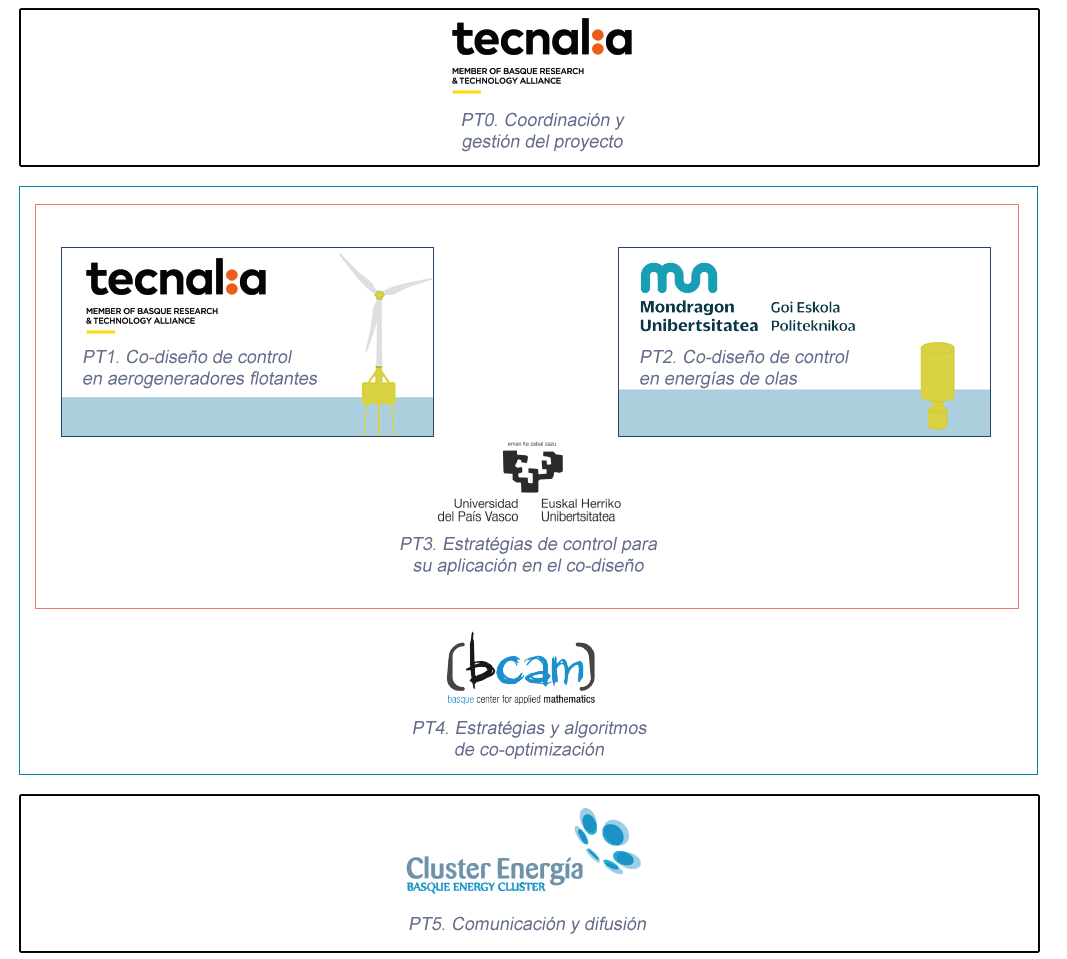Project
KONFLOT's approach is to develop a control co-design (CCD) methodology, i.e. cost-optimised technologies by considering control strategies as the core concept for the design of floating renewable systems.
This project also aims to go further towards optimising the design of floating energy generators in order to improve the scientific and technological positioning of the Basque Science, Technology and Innovation Network and make these technologies more competitive so as to help Basque companies to position themselves in a highly competitive sector with great growth potential.
Objectives of the project
The aim of the KONFLOT project is to establish a design methodology that considers the different subsystems, their dynamics and interactions, and the performance of the controls available on floating renewable generation devices from the early stages of design.
1
To identify CCD techniques applicable to floating wind and wave energy harvesters
2
To select the variables that have the most impact on the design of the different subsystems and define the target metrics for applying CCD.
3
To validate the methodology and tools by applying them to two different scenarios: (i) floating wind and (ii) wave energy.
4
To identify CCD techniques applicable to floating wind and wave energy harvesters.
Technological scope
Control engineering is generally developed at the end of a sequential process, once the mechanical, electrical and other subsystems have been fully defined. As a result, innovative control algorithms for controlling systems come in at the last stage of a sequential strategy which allows engineering departments to work independently and sequentially towards designing new products and systems.
The Control Co-design (CCD) technique which KONFLOT will use follows a concurrent engineering strategy that considers the multidisciplinary interactions of the subsystem from the very start of the design process. Thanks to this change in approach, the control engineer becomes the natural leader in the design of new products and systems by applying control concepts to design the entire system and achieve optimal solutions that cannot be achieved in any other way.
The most important advantages of CCD (Control Co-Design) relate to a reduction in [1]:
- ✓ The weight of structures by up to 50%
- ✓ Losses by 15%
- ✓ OPEX by up to 15%
In total, the overall Levelized Cost Of Energy (LCOE) could be reduced by up to 45%.
[1] Mario Garcia-Sanz Program director ARPA-E, “Control Co-Design for Wind/Tidal/Wave Energy Systems”, 2018.
Expected results
A methodology for applying CCD techniques to floating wind and wave energy harvesters.
Optimisation tools and algorithms that make interactions between the dynamics of the different subsystems possible.
Advanced controls for floating wind and wave energy that will be integrated into the CCD process.
** Expected results from the project:
✓ 12 indexed scientific journals
✓ 5 potential transfer agreements with companies
Activities
The activities that make up the KONFLOT work plan are spread over six work packages (WPs) lasting a total of 21 months.







